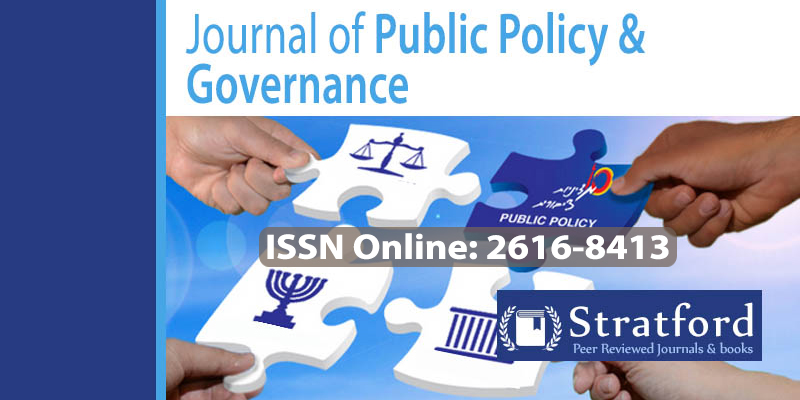Influence of Historical Stereotype on Women Access to Leadership in Murang’a County Government
DOI:
https://doi.org/10.53819/81018102t4095Abstract
Gender equality in leadership is a practice and notion that is contested and obligatory requisite. The term gender parity has been acknowledged by mutually globally and by government Institutions. Appreciation of the impact of gender fairness is a pleasing objective required across many avenues in internationally progression practice. The purpose of this study was to evaluate the influence of historical stereotype on women access to leadership in Murang’a County Government. The study was anchored on The Liberalism Theory. The study adopted descriptive research design, and the population under study comprised 159 senior government officers and political elite in Murang’a County Government and the legislative assemble of Murang’a. The study used purposive sampling in identifying persons with requisite knowledge of the concept of the study. The primary data was collected using the questionnaire and the secondary data was obtained from the government policy documents, gender policies annual reports, strategic plans as well as periodic reports both published and unpublished. The study findings were analyzed with the aid of SPSS software and Microsoft Excel Software and presented by use of tables and percentage for ease of data interpretation and consumption by the readers. The study established that historical stereotype was able to explain 60.4% of the variation in women leadership in Murang’a County Government as indicated by R-squared on 0.604. The study moreover established that there was a positive relationship between historical stereotype and women leadership. The study concluded that stereotyped point of view regarding women comprises key hindrances which include societal insight in relation to leadership aptitude of women’s lack of assertiveness in participation in political sphere and leadership positions. Owing to the findings, Women should be exposed to work in sections with higher amount of progressive advancement or in areas that transform to executive progression since they are not inferior provided they have the same qualifications with the male counter parts.
Keywords: Historical stereotype, Women leadership Structured women empowerment, Murang’a County Government
References
Baker, C. (2019). Stereotyping and women's roles in leadership positions. Industrial and Commercial Training.
Cooper, D.R. &Schindler, P.S. (2009). Methods in Business Research .Tata McGraw Hill, New Delhi.
Dhatt, R., Theobald, S., Buzuzi, S., Ros, B., Vong, S., Muraya, K., & Jackson, C. (2017). The role of women's leadership and gender equity in leadership and health system strengthening. Global Health, Epidemiology and Genomics, 2. https://doi.org/10.1017/gheg.2016.22
Elias, E. (2018). Lessons learned from women in leadership positions. Work, 59(2), 175-181. https://doi.org/10.3233/WOR-172675
Frosina, N., & Mwaura, G. M. (2016). An Assessment of Gender Mainstreaming in STI and the Knowledge Society in Kenya. Assessment Journal, 5-34.
Government of Kenya, (2010), Constitution of Kenya. Nairobi, Government Printers.
Hobbes, T., & Locke, J. (1959). The Political Theories. Journal of the History of Ideas, 20, 23. International Academic Journal of Information Sciences and Project Management | Volume 2, Issue 2, pp. 181-198
Kirima, L. K. (2012). Contextual Factors Affecting Gender Mainstreaming in the Public Sector: Ministry of Education, Eastern Province, Kenya. PhD Thesis (Kenyatta University), 45- 52.
Kirima, W. K. (2020). Constitutionalism and the Rule of Law: Evaluating Whether Due Process is applied in the Prosecution of Terror Suspects in Kenya (2012-2019) (Doctoral dissertation, United States International University-Africa).
Kombo, D.K& Tromp, D.L.A (2006), Proposal &Thesis Writing (2nd Edition), Makuyu Kenya: DonBosco Printing Press. Kenya.
Kossek, E. E., & Buzzanell, P. M. (2018). Women's career equality and leadership in organizations: Creating an evidence‐based positive change. Human Resource Management, 57(4), 813-822. https://doi.org/10.1002/hrm.21936
Lawson, M. A., Martin, A. E., Huda, I., & Matz, S. C. (2022). Hiring women into senior leadership positions is associated with a reduction in gender stereotypes in organizational language. Proceedings of the National Academy of Sciences, 119(9), e2026443119. https://doi.org/10.1073/pnas.2026443119
Lee, S.-H. (2016). Gender mainstreaming in South Korea - a critical analysis through discursive institutionalism around the issue of childcare. Diplomacy and International Relations conference proceedings. 4-8.
Mehra, R., & Gupta, G. R. (2006). Gender Mainstreaming: Making It Happen. International Center for Research on Women, 1-34.
Moravcsik, A. (1992). Liberalism and international relations theory (pp. 7-9). Cambridge, MA: Center for International Affairs, Harvard University.
Mugenda, O.M and Mugenda, A G, (2003). Research Methods: Quantitative and Qualitative Approaches, Acts press, Nairobi.
Ravindran, T. S., & Kelkar-Khambete, A. (2007). Women’s health policies and programmes and gender mainstreaming in health policies, programmes and within the health sector institutions. Background paper prepared for the Women and Gender Equity Knowledge Network of the WHO Commission on Social Determinants of Health.
Schalkwyk, J. (2015). Culture, Gender Equality and Development Cooperation. Culture, 1-4.
Seidman, S. (1983). Liberalism and the origins of European social theory. Univ of California Press.
UNESCO. (2015). A Guide for Gender Equality in Teacher Education Policy and Practices. United Nations Educational, Scientific and Cultural Organization, 19-26.
United Nations. (2002). Gender Mainstreaming: An Overview. Journal on Gender Issues
Walby, S. (2004). Gender mainstreaming: Productive tensions in theory and practice. ESRC Gender Mainstreaming Seminars, 1-29.
Welsh, Patrick. (2010). Community Development: A gendered activism? The Masculinities question. Community Development Journal, 45(3), 297-306. https://doi.org/10.1093/cdj/bsq023


